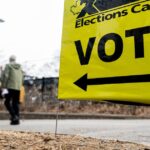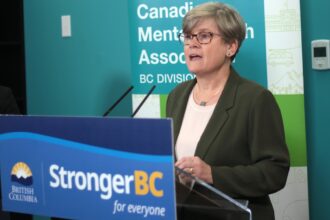Manitoba Election: NDP Support Drop Tightens Races Ahead of Vote
The once-comfortable lead held by Manitoba’s New Democratic Party has narrowed significantly in recent weeks, creating what political analysts now describe as a highly competitive provincial election landscape with just days remaining before Manitobans head to the polls.
Recent polling data suggests the NDP, led by Wab Kinew, has seen its double-digit advantage over the Progressive Conservatives shrink to within the statistical margin of error. This dramatic shift follows weeks of aggressive PC advertising campaigns targeting Kinew’s leadership and character, alongside mounting criticism of the NDP’s fiscal planning and campaign promises.
Polling Trends and Voter Sentiment
“What we’re seeing is a classic tightening effect as election day approaches,” explained Dr. Malcolm Richards, political science professor at the University of Manitoba. “The PCs have effectively deployed targeted messaging questioning the NDP’s ability to deliver on their healthcare commitments without substantial tax increases, and that message appears to be resonating with undecided voters.”
The NDP campaign, which initially focused on healthcare system improvements and affordability measures, has been forced into a defensive posture. Party strategists have scrambled to counter PC claims about potential tax implications of their platform while attempting to redirect voter attention to the Conservative government’s controversial record on healthcare management during the pandemic.
Tight Contests in Key Ridings
Internal polling from both major parties indicates particularly tight races emerging in key Winnipeg suburbs and several rural constituencies previously considered safe NDP territory. These developments have energized PC supporters while creating palpable anxiety within NDP campaign offices.
“The NDP is confronting the reality that many voters still harbor concerns about their economic management capabilities,” noted Sylvia Monroe, veteran political columnist for the Winnipeg Free Press. “While healthcare remains the top issue for most Manitobans, the PCs have successfully reframed the conversation around fiscal responsibility and tax implications.”
PC Surge and Smaller Party Impact
Premier Heather Stefanson’s campaign has gained momentum despite earlier predictions of a significant PC defeat. Her recent appearances have featured sharper messaging and a renewed emphasis on economic growth initiatives and tax reduction promises.
The Liberal Party and Green Party continue to poll in single digits province-wide, though Liberal Leader Dougald Lamont could play spoiler in select urban ridings where the NDP-PC margins are exceptionally tight.
Increased Voter Engagement
Voter turnout projections suggest heightened engagement compared to previous provincial elections, with advance polling stations reporting increased participation across most constituencies. Political engagement specialists attribute this partly to the perception of a genuinely competitive race.
As campaigns enter their final phase, both leading parties have intensified get-out-the-vote efforts and scheduled additional leader appearances in battleground ridings. The NDP has deployed additional resources to shore up support in traditionally favorable districts, while the PCs continue emphasizing economic management credentials and questioning NDP fiscal plans.
Final Days Before the Vote
With election day approaching, the fundamental question facing Manitoba voters has evolved: will healthcare concerns ultimately outweigh economic considerations, or has the Progressive Conservative narrative about fiscal responsibility successfully undermined the NDP’s momentum? The answer may reshape Manitoba’s political landscape for years to come.










